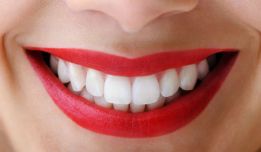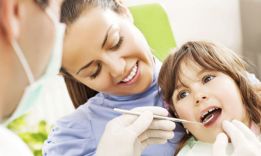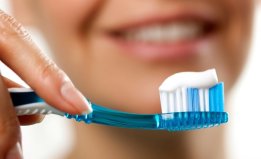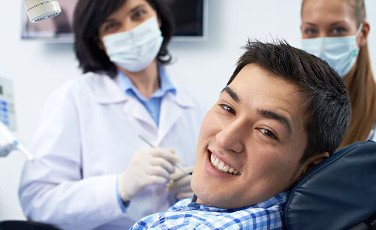Proper oral hygiene can protect your teeth against a wide variety of issues that impact the appearance of your smile. This includes everything from tooth decay and gum disease to cavities and dental erosion.
Most people know the basic dental hygiene recommendations. You’re supposed to brush your teeth at least twice per day and floss after meals.
While these minimal recommendations can help prevent common dental problems, additional care can provide even more protection.
Explore a few additional steps that you can take to improve your dental hygiene routine. Discover the benefits of regular dental cleanings and how a dentist can offer even more guidance.
Regular Dental Cleanings Can Help Remove Plaque
Along with personal care, you should visit your dentist for a regular dental cleaning and exam every 6 months. There are several important advantages of these cleanings:
- Remove plaque and buildup
- Take x-rays of your mouth
- Detect early signs of gum disease
- Detect dental issues that need correction
- Prevent the spread of a dental issue
When you go in for a routine checkup and cleaning, a dental hygienist will start by removing plaque and buildup from your teeth. They can remove plaque that you may be unable to detect on your own.
Additional steps may be taken by the dental hygienist, depending on the condition of the patient. Sometimes, fluoride will be used to prevent decay or a sealant could be used to help protect the back of your permanent teeth.
During these checkups, x-ray photos will be taken of your teeth. If the dental hygienist or dentist detects any problems, you may be able to address a dental issue early. Early detection increases your chances of solving the problem and minimizing any potential damage or decay.
The combination of regular dental checkups and good dental hygiene will minimize the chances of decay and help you maintain a beautiful smile.
The cost of the treatment will depend on the specifics of your dental visit. Some private health insurance will cover 1 or 2 regular teeth cleanings each year. This may or may not include x-rays and a checkup.
To determine the cost of the checkup and cleaning, you will need to contact your dental offices. They will need your insurance information. After they know the scope of your visit and verify your insurance, you can get a price quote for the teeth cleaning.
Your Dental Hygienist Can Help Prevent Common Dental Diseases
By visiting your local dental offices for teeth cleaning, the dental hygienist will remove plaque and buildup. This includes the formation of hard tartar deposits. These deposits are referred to as calculus.
Removing this buildup and providing you with tips to minimize plaque from forming in the future, you can prevent gum disease.
Your dental hygienist may also provide recommendations for your diet. Certain foods can help protect your teeth while some foods can cause further damage.
Generally, sugary foods, such as candy and sweets, can leave food debris that erodes the enamel of your teeth. As this erosion occurs, you are more prone to develop cavities.
Teeth Cleaning Procedures Are Typically Painless
Some people may put off their teeth cleaning due to the fear of pain. But, these procedures are typically painless. You may experience some mild discomfort during some of the cleaning techniques.
Though this discomfort is minimal, your gums may be a little sore after the cleaning. If you take good care of your teeth and gums, this soreness can be minimized.
The Basics of Correct Brushing and Flossing
Regular checkups and teeth cleaning can help prevent problems with your teeth, but you’ll also need to do your part. This means using good dental hygiene practices.
The general recommendation is to brush twice per day. You should brush at the start of the day, after you’ve eaten breakfast, and again before the end of the day.
You should always brush for 2-minutes, spending about 30-seconds on each quadrant of your mouth – upper left, upper right, lower left, and lower right.
As you brush, position your toothbrush so that it is at a 45-degree angle against your gums. Use a circular motion as you work your way around your teeth.
Some dentists recommend or encourage the use of electric toothbrushes. The truth is that you can maintain healthy teeth with a manual toothbrush. But, some people find it easier to use good brushing technique with the help of an electric toothbrush.
An electric toothbrush can also be used to encourage your children to brush regularly. Electric toothbrushes with fun lights or sounds can make brushing more entertaining.
But, for adults, the choice between manual and electric is a personal decision. You can use either option. Though, you should look for soft bristles, whether you choose manual or electric. The soft bristles are better for the health of your gums.
When selecting your toothpaste, it should contain fluoride. The fluoride protects tooth enamel, helping to limit the advancement of tooth decay.
Though, children under the age of 6-years should use a toothpaste that contains a limited amount of fluoride. Children under the age 3 should only use a small dab of toothpaste.
Flossing is another important part of your daily oral hygiene routine. Flossing can help remove food debris that you could not reach with regular brushing.
Remember, if you need help with any of these dental hygiene recommendations, your dental hygienist can show you the proper technique. This includes the proper technique for brushing and flossing, along with additional recommendations for protecting your teeth.
Additional Tips for Protecting Your Teeth
Brushing, flossing, and teeth cleaning keeps debris, build up, and plaque from causing tooth decay and the spread of gum disease. But, there are still a few other steps that you can take to maintain the health of your teeth.
You should avoid using your teeth to open packages or to perform any action other than chewing on food. Don’t use your teeth to rip open a package of chips or open a bottle. This can place unnecessary pressure on your teeth, potentially causing nerve damage, chipping, or cracking.
Another tip is to limit your consumption of foods and drinks that contain a lot of sugar. Sugar sticks to your teeth and is more difficult to remove with brushing and flossing. The sugar that remains on your teeth, and in your mouth, is converted into acid and dissolves the enamel of your teeth.
After each meal, you should rinse your mouth with water, followed by a mouthwash. You don’t need to brush or floss after each meal.
In fact, you may not have the option to brush after eating your lunch at work. But, mouthwash can help kill bacteria before it spreads. It is one small step that helps prevent the spread of harmful germs.
Good dental hygiene requires repetition. You should continue to use these steps every day to maintain the health of your teeth.
The bottom line is that you should follow the basics of good oral hygiene. Remember to brush twice per day, floss after meals, and rinse your mouth with a mouthwash. Along with these tips, you should also schedule regular teeth cleanings – once or twice per year.






